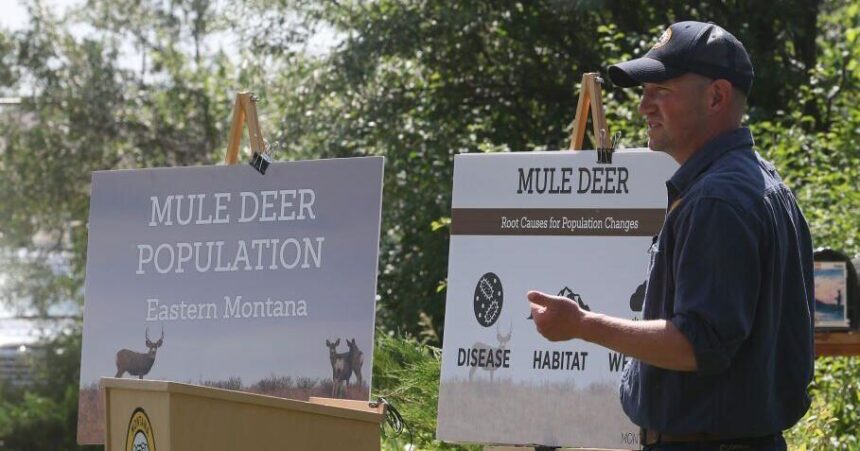Spring surveys of mule deer populations across a large swath of Eastern Montana show populations stabilizing at numbers close to the lowest seen in 10 years, according to data presented by Fish, Wildlife & Parks officials on Monday.
As a result, hunters will have fewer opportunities to pursue mule deer does this fall.
The largest drop has been in southeastern Montana’s Region 7, where populations this spring are estimated to have increased by about 20% over last year when fewer than 60,000 animals were counted. That’s less than half of what the population was in 2016 and 40% below the long-term average for the region.
Region 7 wildlife manager Brett Dorak said mule deer populations in the extreme southeastern corner of the state were some of the hardest hit by continuing drought. Despite the decline, doe licenses – also known as antlerless or B licenses – won’t be reduced any further because they have been dramatically cut beginning in 2021.
People are also reading…
“Over the past four to five years we’ve reduced B license allocation by about 91%,” Dorak said. “A lot of these licenses are the lowest they can be in our approved quota from the Fish and Wildlife Commission.”
In 2020 about 11,000 B licenses were issued in the region. Last year and this year it will be closer to 1,000, and those will only be valid on private property to help landowners with depredating concentrations of deer.
Whitetail deer numbers are also down in Region 7, resulting in a reduction of B licenses for that species by 2,500 tags.
The story is somewhat similar in northeastern Montana’s Region 6 where B licenses have been cut from around 10,000 in 2021 to around 3,000 this year. Compared to last year’s numbers, however, the available tags have been cut in half.






